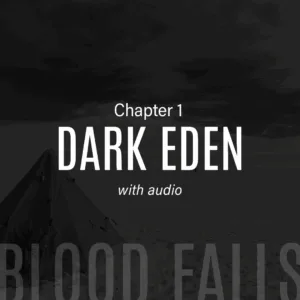The Beast of Revelation
The last book of the Bible is called The Revelation of Jesus Christ because it describes the culmination of sin, judgment, grace, and the revealing of the Lord in all His glory. Revelation, as it is commonly called, foretells the events of the final seven years of this age and introduces mankind to the age to come. Most of the book relates the judgments poured out upon an unbelieving generation and the grace by which God brings His people to Him through a time of great trial. The witness of Israel’s evangelists will bring in a large harvest of souls.
The first three chapters of the book of Revelation are direct letters to each of seven churches operating within Asia Minor (now the state of Turkey) at the time of John’s vision. Many believe these churches represent not only the Church throughout the centuries but also the categories of believers present in the world at the time of the fulfillment of the prophecies of Revelation.
Chapter 4 of Revelation opens with the sound of a trumpet calling John to “Come up here, and I will show you what will happen after these things.” This verse indicates that the previous chapters have been a progressive unfolding of a timeline and, at the very least, hint prophetically at the “snatching away” of the believer John from Earth to the heavenly places and the throne of God. As the four living creatures and the twenty-four elders worship, John sees God is holding a scroll sealed with seven seals. Only the Lamb who was slain is declared worthy to break the seals and open the scroll.
Thus begins the judgments of the Tribulation upon the earth.
The first seals introduce the Four Horsemen of the Apocalypse. The first of these horses is the white horse representing conquest and upon which rides a conqueror wearing a crown. This man is most likely the prince who arises out of the revived Roman Empire, the man known as the Anti-Christ.
Then after the sixty-two weeks, the Messiah will be cut off and have nothing, and the people of the prince who is to come will destroy the city and the sanctuary. And its end will come with a flood; even to the end there will be war; desolations are determined.
-Daniel 9:26
Daniel’s prophecy is crucial to unlocking the events of the last days. The “people of the prince who is to come” can only mean Rome. The Roman army led by Titus destroyed Jerusalem and the Temple in AD 70.
Who Is the Anti-Christ?
The Anti-Christ won’t be revealed until the restrainer, understood to be the Holy Spirit, is removed (2 Thessalonians 2:7). Since Christians in the age of grace are sealed with the Holy Spirit (Ephesians 1:13; 4:30; 2 Corinthians 1:21-22), He won’t be leaving Earth without them.
For those who read Revelation 13 preceding the Rapture, the Anti-Christ and his sidekick are introduced as “Beast.”
And the dragon stood on the sand of the seashore.
Then I saw a beast coming up out of the sea, having ten horns and seven heads, and on his horns were ten crowns, and on his heads were blasphemous names. And the beast that I saw was like a leopard, and his feet were like those of a bear, and his mouth like the mouth of a lion. And the dragon gave him his power and his throne, and great authority.
– Revelation 13:1-2
The second beast arises out of the earth and displays the external trappings of a messiah. Together, these two rule for seven years over the world systems. This seven-year period begins with the signing of a covenant between the Anti-Christ and Israel.
And he will confirm a covenant with the many for one week, but in the middle of the week he will put a stop to sacrifice and grain offering; and on the wing of abominations will come the one who makes desolate, until a complete destruction, one that is decreed, gushes forth on the one who makes desolate.
– Daniel 9:27
In the study of end times prophecy in the Bible, a prophetic “week” is seven years.
In the middle of the “week,” something happens to the Beast.
I saw one of his heads as if it had been fatally wounded, and his fatal wound was healed. And the whole earth was amazed and followed after the beast; they worshiped the dragon because he gave his authority to the beast; and they worshiped the beast, saying, “Who is like the beast, and who is able to wage war with him?” A mouth was given to him speaking arrogant words and blasphemies, and authority to act for forty-two months was given to him. And he opened his mouth in blasphemies against God, to blaspheme His name and His tabernacle, that is, those who dwell in heaven.
– Daniel 13:3-6
God’s introduction to the Beast in Revelation 13 describes him as having ten horns and seven heads. Each of the horns bore a crown. These horns and heads are interpreted as being kingdoms. The difficultly in knowing what is actually wounded in verse 3: a kingdom or a person?
It could very well be both. It’s possible that a kingdom is felled when the leader is wounded in a way that appears to be fatal.
Who is this leader? Revelation 17:8-11 explains that the Beast himself is the head of the revived Roman Empire. It is believed he could be the target of an assassination attempt that nearly fells his kingdom. Though the wound only appears (“as if”) fatal, Satan will make it appear as if the Anti-Christ has risen from the dead. Thus he will produce a demonic resurrection narrative to delude and amaze the world.


























Leave a Reply